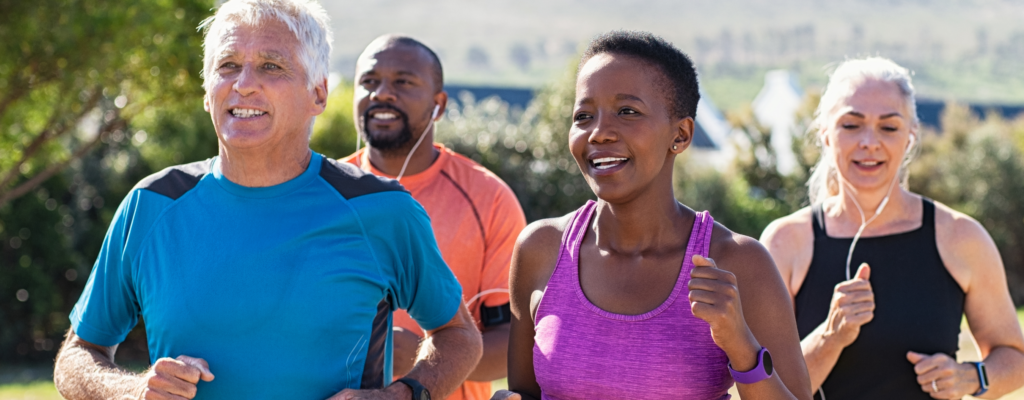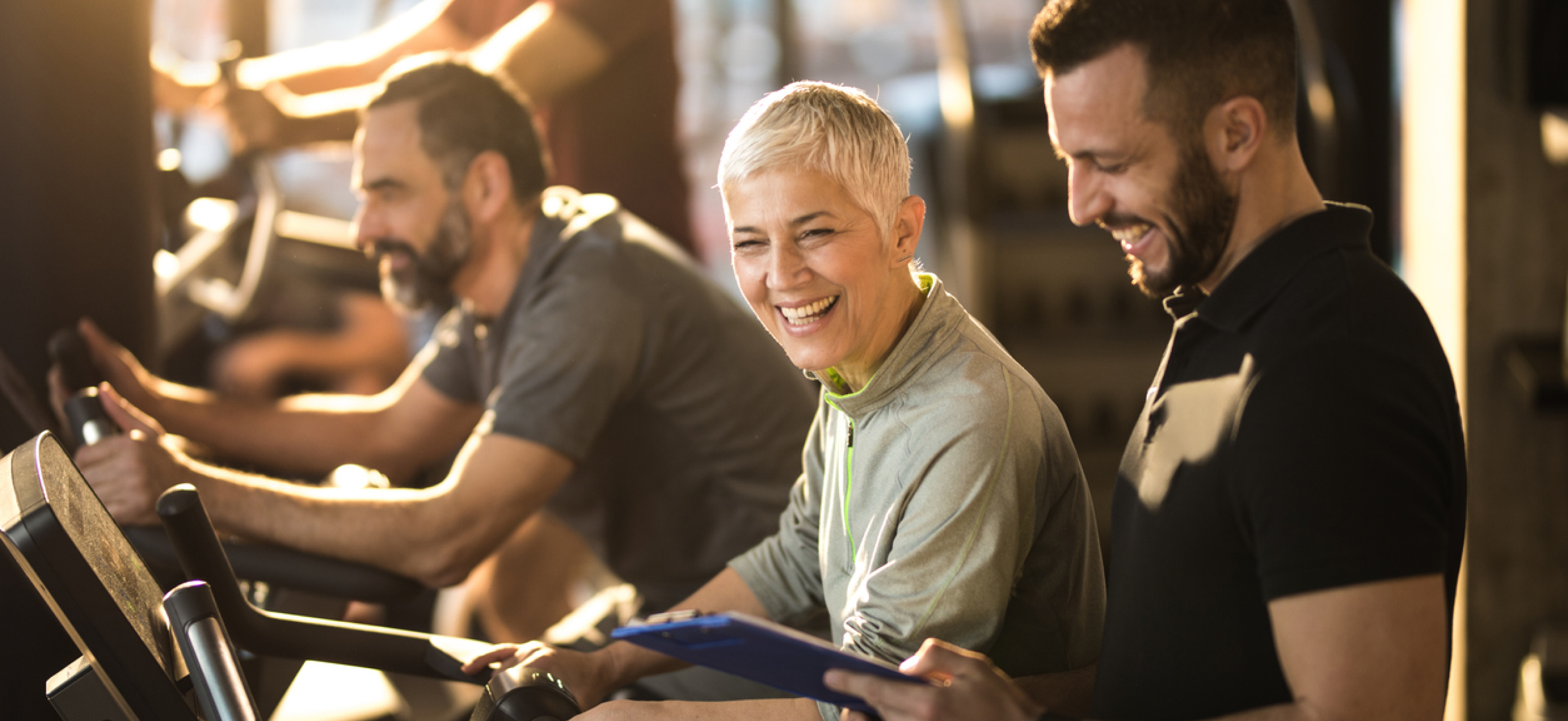Imagine wanting to improve your health and fitness, only to feel unwelcome, too different, self-conscious, or that nobody is equipped to handle your individual needs. Unfortunately, this is how many people feel and it creates a real barrier to something that can already take courage and motivation to begin.

Diversity, equity, and inclusivity (DEI) within the fitness industry are critical as they contribute to creating a more welcoming, effective, and equitable environment for ALL. As a certified personal trainer, you play a significant role in shaping how people experience fitness and there are simple ways you can encourage and enable clients with diverse needs to pursue their health and wellness goals.
Using a personal trainer app can help you create tailored programs that cater to diverse needs and support an inclusive fitness experience.
WHY BE INCLUSIVE?
Well, simply because fitness is for everyone! We don’t need to tell you that exercising has positive benefits across all areas of life: physically, emotionally, mentally, and socially. Everyone should be able to experience those benefits and improve their health and wellbeing.
Here are some of the reasons why you should consider focusing on being inclusive:
SMASHING STEREOTYPES
There is a common stereotypical image of fitness: young, toned, slim, defined muscles, able-bodied, often Caucasian. Sure, those people exist in the fitness world, but they only represent a small percentage of the average population. In order to encourage everyone to be active, it’s important to communicate that your business welcomes anyone who wants to improve their health.
Inclusivity challenges these stereotypes and promotes a more diverse range of body types, ability levels, ages, identities and socioeconomic backgrounds. As a personal trainer, you can actively work to break down these stereotypes and help clients build self-confidence and self-acceptance.
IMPROVING ACCESS AND ACCESSIBILITY
In order for people with diverse needs to participate in physical activity, fitness facilities and programs must be accessible. You can play a role in adapting workouts and equipment to accommodate any different requirements such a disability, health or post-surgery limitations, parental or other lifestyle commitments, sexual or gender identity, mental health issues and many more.
Creating accessible fitness environments removes barriers and allows everyone to participate in physical activity.
EMPOWERING OTHERS AND BOOSTING CONFIDENCE
Inclusivity in training encourages clients to embrace their uniqueness and celebrate their progress, no matter their starting point.
Personal trainers empower their clients, helping them build confidence and achieve their fitness goals.
CULTIVATING A SUPPORTIVE FITNESS COMMUNITY
Inclusive fitness spaces foster a sense of belonging and community. People are more likely to stick with their fitness routines when they feel supported and valued.
Personal trainers can create a welcoming and accepting atmosphere where clients can connect with others who share their experiences and goals.
STRENGTHENING YOUR BUSINESS
Embracing DEI can be financially beneficial for your business. A diverse clientele can lead to increased revenue and a positive reputation within the community.
Clients are more likely to recommend a trainer that promotes inclusivity and takes steps to diversify their offerings, leading to business growth.
For more on why being inclusive is important for fitness check out this post from The International Sports Sciences Association (ISSA): Diversity and Inclusion in Fitness – Why We Need More of It
WHAT ARE THE BENEFITS OF BEING INCLUSIVE?
Inclusivity can have profound impacts on the lives of clients including:
- Increased participation: Inclusive fitness leads to higher rates of engagement and, ultimately, better health outcomes for individuals who might otherwise feel excluded.
- Improved mental health: Feeling included and supported in a fitness setting can reduce feelings of isolation and anxiety, and it can boost self-esteem and body confidence.
- Enhanced motivation: Clients are more likely to stay motivated and be more consistent when they feel that their unique needs and goals are acknowledged and supported.
- Positive social interactions: Inclusivity encourages the development of a supportive fitness community. Clients may find workout partners, share experiences, and build friendships, enhancing their overall well-being.
- Self-confidence and empowerment: Inclusive fitness environments help clients build self-confidence and empowers them to take control of their health and fitness journeys. They become more proactive in setting and achieving their goals, positively impacting other areas of their life.
- Better health outcomes: Inclusivity in fitness can lead to improved health outcomes for individuals with different needs, including those with disabilities or chronic health conditions. Adaptations and modifications can be made to fitness programs to accommodate these individuals, promoting overall wellbeing.
- Positive impact on society: Inclusivity in fitness extends beyond individual wellbeing. It contributes to a more equitable society by challenging stereotypes, breaking down barriers, and promoting social cohesion.
For more on the benefits for clients check out this blog post from the Athletics and Fitness Association of America (AFAA): Why Diversity Matters to Our Participants
HOW TO ADJUST YOUR APPROACH FOR DEI
Diversity, equity, and inclusion are about understanding that although some clients have different goals, require different training methods, and will have different results, they all deserve the same respect.
Here are 5 simple ways to make your training business more inclusive:
#1 EDUCATE YOURSELF
It’s important not to leap into training a bunch of different needs until you know what you’re doing, and there’s really no end to the training you could do. A good place to start is to attend workshops, seminars, or courses focused on diversity, inclusion, and cultural competence. Having specific training in this area will not only make you a better, more versatile trainer but will reassure clients with diverse needs that they’re in good hands.
Be aware of cultural preferences and sensitivities when planning workouts. Some clients may have cultural or religious restrictions on certain exercises or clothing.
The International Sports Sciences Association (ISSA) offer a course for personal trainers wishing to be more inclusive: Fostering Inclusivity in Fitness
#2 GET TO KNOW YOUR CLIENTS
While conducting your initial assessment, start building a strong rapport with your client. Take the time to get to know them, including their interests, preferences, goals and challenges. For example, if you have a client who suffers from anxiety, discuss their triggers, symptoms, and comfort levels so that you can manage these when programming and running their sessions.
Show genuine care and interest in clients’ wellbeing beyond just their fitness goals. Actively listen and ask open-ended questions to learn what they hope to achieve and why. Check in regularly with them to learn of any changes in their life so you can make necessary modifications.
#3 CREATE A WELCOMING ATMOSPHERE
A comfortable, safe, judgment-free workout environment will lead to more positive experiences and better client retention. If group training, encourage clients to motivate and support each other. Be patient and supportive as clients with diverse needs will experience success at different speeds.
A client may have attempted exercise previously and experienced taunting, harassment, or negativity, something which can scare people away from fitness for a long time. Ensure you make it clear to all clients that you run a tolerant, inclusive business, and that any negativity, discrimination, or harassment will not be tolerated.
#4 ADAPT YOUR TRAINING METHODS
Tailor workouts to each client’s goals and capabilities. Modify exercises, repetitions, sets, and intensity levels as needed. For example, clients with mobility issues may require seated or low-impact exercises.
A client with a learning disability or difficulty may need to have the instructions broken down into smaller, easier to retain chunks.
Clients with medical conditions or disabilities may need very specialized and bespoke exercises. If necessary, (with the client’s consent), consult with their healthcare professional(s) to ensure you are developing safe and effective workouts. For example, a client with diabetes may require a trainer who understands the importance of blood sugar management during workouts.
A client with autism or sensory sensitivities may need to have minimal noise during a session, or struggle with distractions. You can ensure that you speak at a lower level, don’t play loud music, and hold sessions with them somewhere with minimal distractions, rather than at a local park, for instance. Or consider virtual training for clients who can’t leave their homes or who struggle with being in public or in strange places.
Depending on your set-up, you could invest in adaptive equipment, such as modified exercise benches or accessible weight machines to ensure you can meet the needs of diverse clients.
You may consider adding female-only classes to cater for women who prefer not to workout around males or can’t due to religious reasons. This may also provide a safe space for women who have suffered abuse or similar.
Clients with injuries will have very specific needs depending on their situation. Read more on this in our blog post: Exercise Variation in Different Dimensions
Set up habits for your clients to give them an extra bit of at-home prompting with things like sleep, nutrition and water intake. The new Habit Programming feature in the TrueCoach app makes this simple for both you and your clients. You could even assign a daily habit of 5 minutes of deep breathing.
#5 ACTIVELY PROMOTE YOUR INCLUSIVITY
There are ways you can show current and potential clients how seriously you take DEI. There’s no point hiding it away until it’s required!
Use social media to post videos about inclusive training and how important it is. Make it clear that you support and welcome members of the LGBTQ+ community. ISSA have some great advice on this in their blog post: How to Make Your Fitness Business Inclusive for the LGBTQ+ Community
Be aware of the stereotypical image represented in the fitness industry (especially on social media) and be an advocate for change by welcoming, championing and celebrating people of all genders, colors, ages, sexual orientations and body shapes.
Regularly share success stories and celebrate milestones and little wins. In fact, regularly celebrate that people are working on their health and wellbeing full stop!
For information on the challenges and triumphs of women in fitness roles, download our latest FREE ebook: Women in Fitness: Stats, Stories, and Strategies for Breaking Down Barriers.
BE PART OF THE ONGOING SOLUTION
Diversity, equity and inclusion should be a core element of your personal training. Not only will it help to create better lives for people, but it will strengthen your business and contribute to a more realistic, representative fitness industry.
Seek advice from and collaborate with trainers who have experience in inclusive training for the two-way sharing of insights, lesson learned, and best practices.
Share your journey and learnings with your community and keep the discussions going. Personal trainers can have such a positive impact on society as a whole and, as a bonus, it’ll make you feel pretty darn great as well!
By practising DEI you can expect enhanced client satisfaction, better retention, and improved outcomes, which should lead to a positive reputation and more referrals. A strong and respected brand can only be good for business growth.
By keeping inclusivity and respect at the forefront of everything you do, you will help to shape a better, more equitable fitness future.
For more on DEI, read this blog post by the Athletics and Fitness Association of America (AFAA): The Importance of Diversity, Equity, and Inclusion in Fitness
Sign-Up for Our Newsletter
Recommended Resources For You

Blog
Embracing Diversity in Personal Training: Different Population Niches and How to Train Them
Author: TrueCoach
One of the great paradoxes of personal training lies in its name. While it’s a one-on-one endeavor, the truth is that people come in all shapes, sizes, and phases of life. Each individual who walks into your coaching space presents a unique history, set of goals, and often, a vastly different physical experience from the […]

Blog
A Personal Trainer’s Guide to Cross-Cultural Communication
Author: TrueCoach
Personal trainers, as guardians of fitness narratives, wield significant influence over the well-being and aspirations of their clients. In an increasingly diverse world, the importance of adept cross-cultural communication cannot be overstated. This guide is crafted for personal trainers keen on enhancing their intercultural competency, recognizing and overcoming implicit biases, and fostering inclusive training environments. […]

Blog
Fitness for all: embracing diversity, equity and inclusivity in personal training
Author: TrueCoach
Imagine wanting to improve your health and fitness, only to feel unwelcome, too different, self-conscious, or that nobody is equipped to handle your individual needs. Unfortunately, this is how many people feel and it creates a real barrier to something that can already take courage and motivation to begin. Diversity, equity, and inclusivity (DEI) within […]

Author: TrueCoach
-
First published: October 13 2023
Written by: TrueCoach

